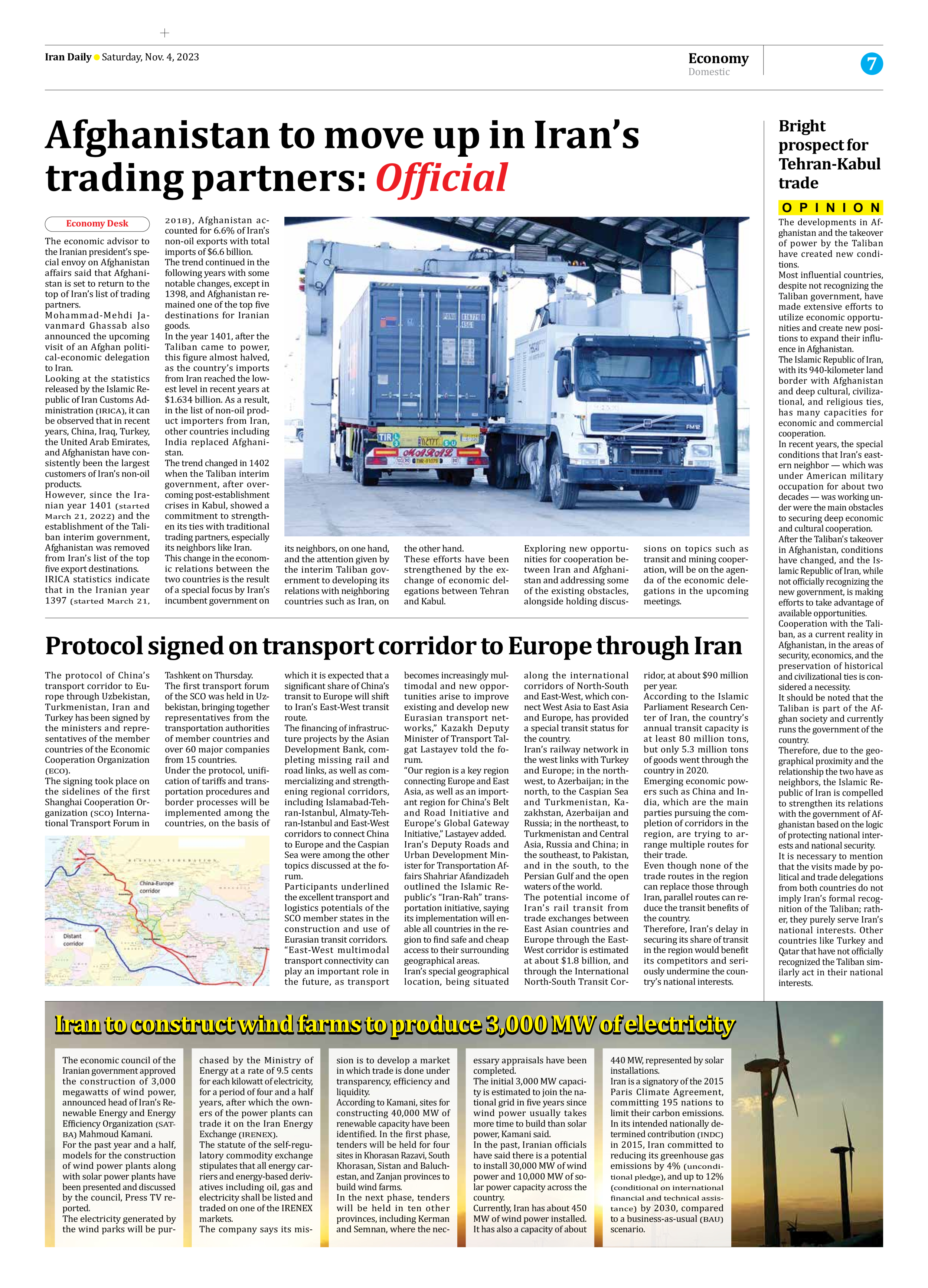
Protocol signed on transport corridor to Europe through Iran
The protocol of China’s transport corridor to Europe through Uzbekistan, Turkmenistan, Iran and Turkey has been signed by the ministers and representatives of the member countries of the Economic Cooperation Organization (ECO).
The signing took place on the sidelines of the first Shanghai Cooperation Organization (SCO) International Transport Forum in Tashkent on Thursday.
The first transport forum of the SCO was held in Uzbekistan, bringing together representatives from the transportation authorities of member countries and over 60 major companies from 15 countries.
Under the protocol, unification of tariffs and transportation procedures and border processes will be implemented among the countries, on the basis of which it is expected that a significant share of China’s transit to Europe will shift to Iran’s East-West transit route.
The financing of infrastructure projects by the Asian Development Bank, completing missing rail and road links, as well as commercializing and strengthening regional corridors, including Islamabad-Tehran-Istanbul, Almaty-Tehran-Istanbul and East-West corridors to connect China to Europe and the Caspian Sea were among the other topics discussed at the forum.
Participants underlined the excellent transport and logistics potentials of the SCO member states in the construction and use of Eurasian transit corridors.
“East-West multimodal transport connectivity can play an important role in the future, as transport becomes increasingly multimodal and new opportunities arise to improve existing and develop new Eurasian transport networks,” Kazakh Deputy Minister of Transport Talgat Lastayev told the forum.
“Our region is a key region connecting Europe and East Asia, as well as an important region for China’s Belt and Road Initiative and Europe’s Global Gateway Initiative,” Lastayev added.
Iran’s Deputy Roads and Urban Development Minister for Transportation Affairs Shahriar Afandizadeh outlined the Islamic Republic’s “Iran-Rah” transportation initiative, saying its implementation will enable all countries in the region to find safe and cheap access to their surrounding geographical areas.
Iran’s special geographical location, being situated along the international corridors of North-South and East-West, which connect West Asia to East Asia and Europe, has provided a special transit status for the country.
Iran’s railway network in the west links with Turkey and Europe; in the northwest, to Azerbaijan; in the north, to the Caspian Sea and Turkmenistan, Kazakhstan, Azerbaijan and Russia; in the northeast, to Turkmenistan and Central Asia, Russia and China; in the southeast, to Pakistan, and in the south, to the Persian Gulf and the open waters of the world.
The potential income of Iran’s rail transit from trade exchanges between East Asian countries and Europe through the East-West corridor is estimated at about $1.8 billion, and through the International North-South Transit Corridor, at about $90 million per year.
According to the Islamic Parliament Research Center of Iran, the country’s annual transit capacity is at least 80 million tons, but only 5.3 million tons of goods went through the country in 2020.
Emerging economic powers such as China and India, which are the main parties pursuing the completion of corridors in the region, are trying to arrange multiple routes for their trade.
Even though none of the trade routes in the region can replace those through Iran, parallel routes can reduce the transit benefits of the country.
Therefore, Iran’s delay in securing its share of transit in the region would benefit its competitors and seriously undermine the country’s national interests.







